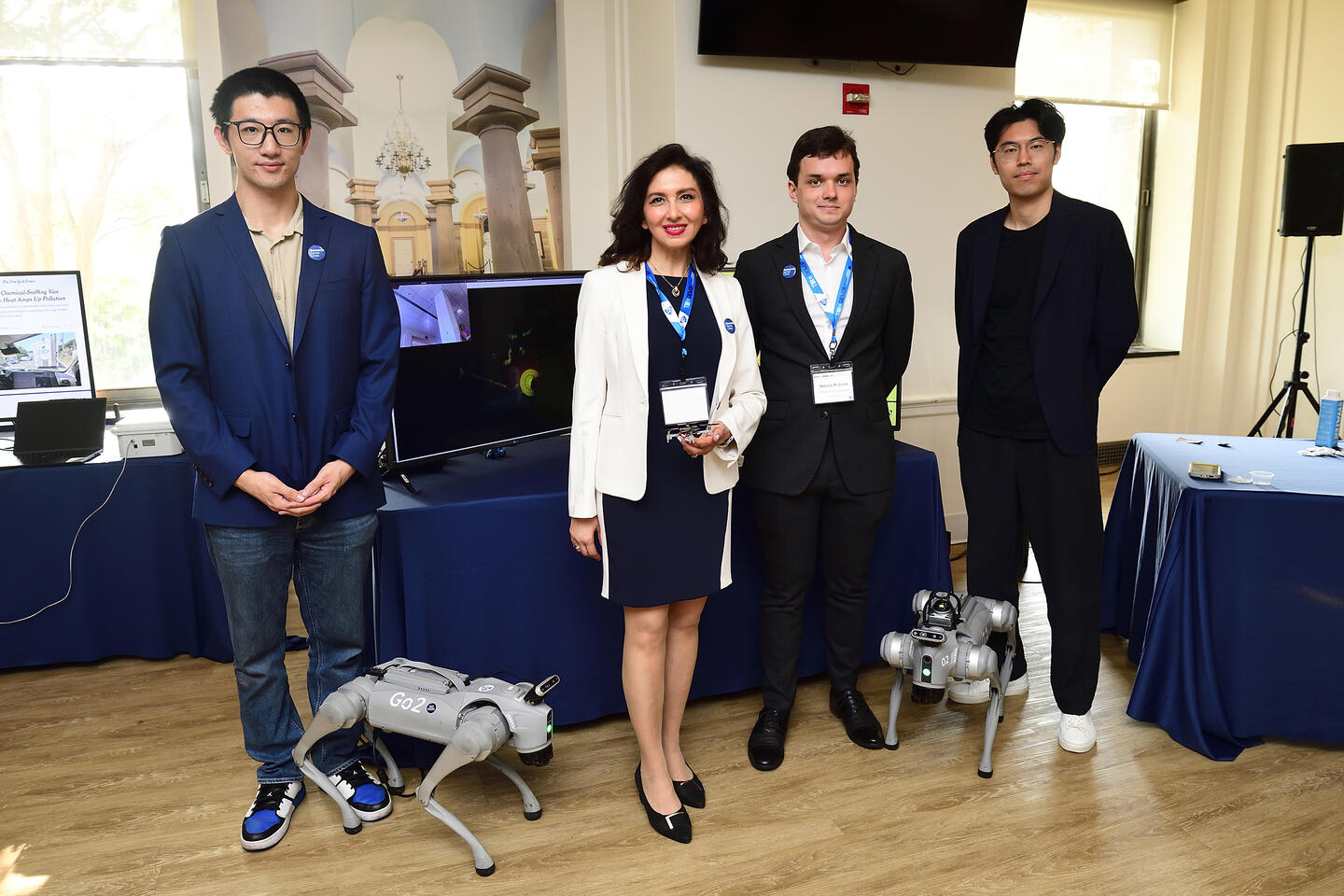When a magnitude 7.7 earthquake in Myanmar led to a skyscraper collapse in Bangkok this spring, search and rescue teams—human, canine, and machine—struggled with dangerous debris, thick dust, and spotty communication networks. Such obstacles, common in the aftermath of natural disasters, are exactly the conditions in which the autonomous robot dogs being prototyped in Tinoosh Mohsenin's lab at Johns Hopkins University are built to thrive. When signals fail, these compact, sure-footed, mechanical first responders are designed to survive longer and search farther—without a network.
Mohsenin, an associate professor of electrical and computer engineering in JHU's Whiting School of Engineering, leads a Department of Defense-funded effort to turn commercially available "robot dogs" into autonomous rescue workers. The team's goal is simple and urgent: Give robots the brains and endurance to go where people can't.

Image caption: Tinoosh Mohsenin, center, and team
Image credit: Will Kirk / Johns Hopkins University
"Imagine a robot small enough to enter a collapsed building, smart enough to navigate the space, recognize potential signs of life, and efficient enough to keep running without relying on external power or internet," says Mohsenin, an affiliate of JHU's Institute for Assured Autonomy, the Data Science and AI Institute, and the Laboratory for Computational Sensing + Robotics.
The goal is not to replace human rescuers, but to protect and support them, sending robots into unstable rubble, flooded corridors, or other dangerous environments so responders can concentrate on saving lives.
Mohsenin and her team are developing artificial intelligence systems that can be adapted for a range of urgent rescue needs. When connectivity is available, robots can transmit live video, relay survivor locations, transmit vital signs, map unfamiliar spaces, assess hazards, and flag potential survivors to guide human rescue efforts.
But when networks fail, embedded AI can help ensure these robots keep moving, making decisions locally, and conserving battery power for extended searches, even without cloud connectivity.
"In a disaster, there are never enough human responders to cover every corridor or unstable structure," Mohsenin says. "What we're building can multiply the reach of rescue teams arming robots to make critical decisions, even when cut off from the outside world."
Unreliable GPS is another common impediment to search and rescue operations. Even under normal circumstances, GPS can fail; signals can be lost in the "canyons" of large cities or in tunnels, and in the constantly chaotic environments of disaster zones, these challenges multiply. To address this, Mohsenin and her team are building navigation and on-device AI systems that combine internal mapping, sensory fusion, and adaptive decision-making, modeled on the human brain's ability to reorient itself when it has no external cues to create or guide them.
To address endurance limitations, the team is pushing the limits of edge computing, processing data locally on the robot rather than relying on distant servers.
"Existing rescue robots typically operate on tiny edge devices with limited battery life and modest compute budgets," Mohsenin says. To extend that life, her group is developing smaller, more efficient AI models that prune unnecessary computations and compress large reinforcement-learning and planning algorithms so they can run on low-power chips. The researchers also use adaptive power management, shutting down sensors or subsystems when they aren't needed. Every optimization means the robots can operate longer in the field, covering more ground on a single charge and storing information until it can be transmitted.
"Every extra joule saved is more time in the field when lives may depend on it," she says.






